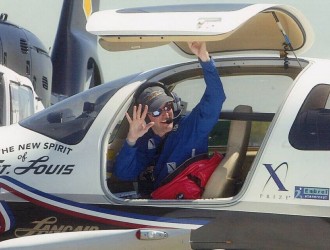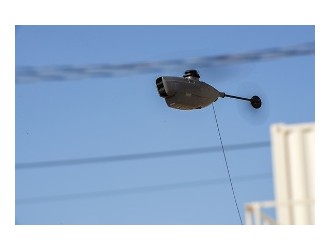At the very top of the pilot pyramid is the Airline Transport Pilot certificate.
It takes time to earn that ticket. A lot of time, a lot of effort, a deep understanding of the nuances of flight, and the ability to truly take command of an aircraft large enough to require a crew to keep it operating safely over the long haul.
Many of my flight school friends sought and earned the ATP. As a result they fly big iron today.
Turbine powered beasts of burden that can haul hundreds of thousands of pounds of freight and hundreds of passengers, over mountain ranges, oceans, and continents without the least bit of trouble.
They fly this amazingly complex, technically advanced equipment for thousands of miles at a time, crossing time zones and the International Date Line as if the feat was small potatoes.
Transitioning from one of these behemoths to another takes training. Moving from the right seat of an Airbus to the same seat in a Boeing aircraft requires time in the classroom, a lot of reading, and a fair amount of work in a collection of simulators. Moving from the right seat of anything to the left seat in that same aircraft, or any other aircraft, also requires an educational process in order to be successful.

Of course, everybody knows that to be true. I’m not breaking any new ground here. You’re not surprised by a word of this.
Until now, when I tell you a truth about aviation that most people never encounter, and fewer would believe. It is this: To transition from the left seat of an Airbus A380 to the left seat of a Piper PA-28-140 requires transition training, too — and a bit more.
While the Airbus captain has thousands of hours in the air, hundreds of hours (or more) in the classroom, simulators, and with his (or her) nose in a book – many of them haven’t flown VFR in years.
Knowing the specifics of how to get the airplane from the hangar onto a runway and into the air at a non-towered airport is a complete mystery to them at this point.

The Piper Cherokee is a great airplane. It’s solid, easy to fly, stable as can be, and has great visibility. It’s also a fairly inexpensive airplane to operate.
But it is 1,232,450 pounds lighter than the Airbus, it cruises about 40 knots slower than the Airbus’ takeoff speed, and while the big jet sits on the ramp the captain’s seat is about the height above the pavement wher a Cherokee pilot would be starting his or her round-out.
They’re both airplanes. Yet, beyond the basics they have very little in common.
And that’s to say nothing of the differences between VFR and IFR flight requirements.
These are good pilots. In many cases they’re great pilots. But they’ve fallen away from the type of flying they did early in their career. And like most humans, they begin to feel nostalgic at some point. Yet, getting back to basics was, until now, a real challenge.
This is the exact reason the Aircraft Owners and Pilots Association (AOPA) has developed the Back to Your Roots program.
Just as general aviation pilots love to fly off to grab lunch with a friend, enjoying the sights and sounds of flight in the process, ATP’s also love to fly. Their flying is far more restrictive than the average GA pilot experiences, however.
Ironically, it’s about the time a big-league, jet-jock gets truly comfortable in their career, they also get the idea that they’d like to take their spouse on a recreational flight, or start introducing their kids to flight as an achievable goal.
havin that itch at the very same time you realize you haven’t climbed into a single-engine airplane and flown VFR in years, presents something of a problem.
Like the low time pre-solo student pilot, the ATP wonders to themselves in quiet moments, I wonder if I can even do this?
Well, of course they can. They just need a refresher course. A reminder of what B, C, D, E, and G airspace mean to a pilot in the VFR world. Given a slight informational nudge in the direction of how to enter or exist the pattern at a non-towered airport, and maybe how to reach a sectional chart again, they’re right back in the game.
Back to Your Roots is a variation on the popular and exceptionally successful Rusty Pilot seminars AOPA’s You Can Fly program has been conducting for the past few years. With more than 40% of those pilots becoming current again and finding their way back into the pilot seat as PIC, there is reason to be optimistic that ATPs will also find their way back into the pilot’s seat of general aviation aircraft again to experience and share the exhilaration of flight in the VFR environment.
All of which brings us to the most important question of all — why? Why would a professional pilot with travel privileges want to load a spouse, or children, or friends into a small piston powered airplane to fly out of a general aviation airport, to another general aviation airport?
The obvious answer is, of course, because they can. But perhaps the more important answer is because it is fun.
It’s a way of showing the kids what dad or mom does when they are at work. And it provides an opportunity to get a couple thousand feet above the ground with someone you care for, to watch the sunset on the world below.
It’s beautiful. It’s life enhancing. It’s what we do. And now, thank goodness, it’s easier than ever for more of us to do it.
Keep an eye on the AOPA’s You Can Fly web pages to see the planned dates and locations as this new seminar rolls out in 2017.
As with AOPA’s Rusty Pilot seminar, Back to Your Roots will start small in testing showcases, then grow to be more numerous as the year rolls on.





